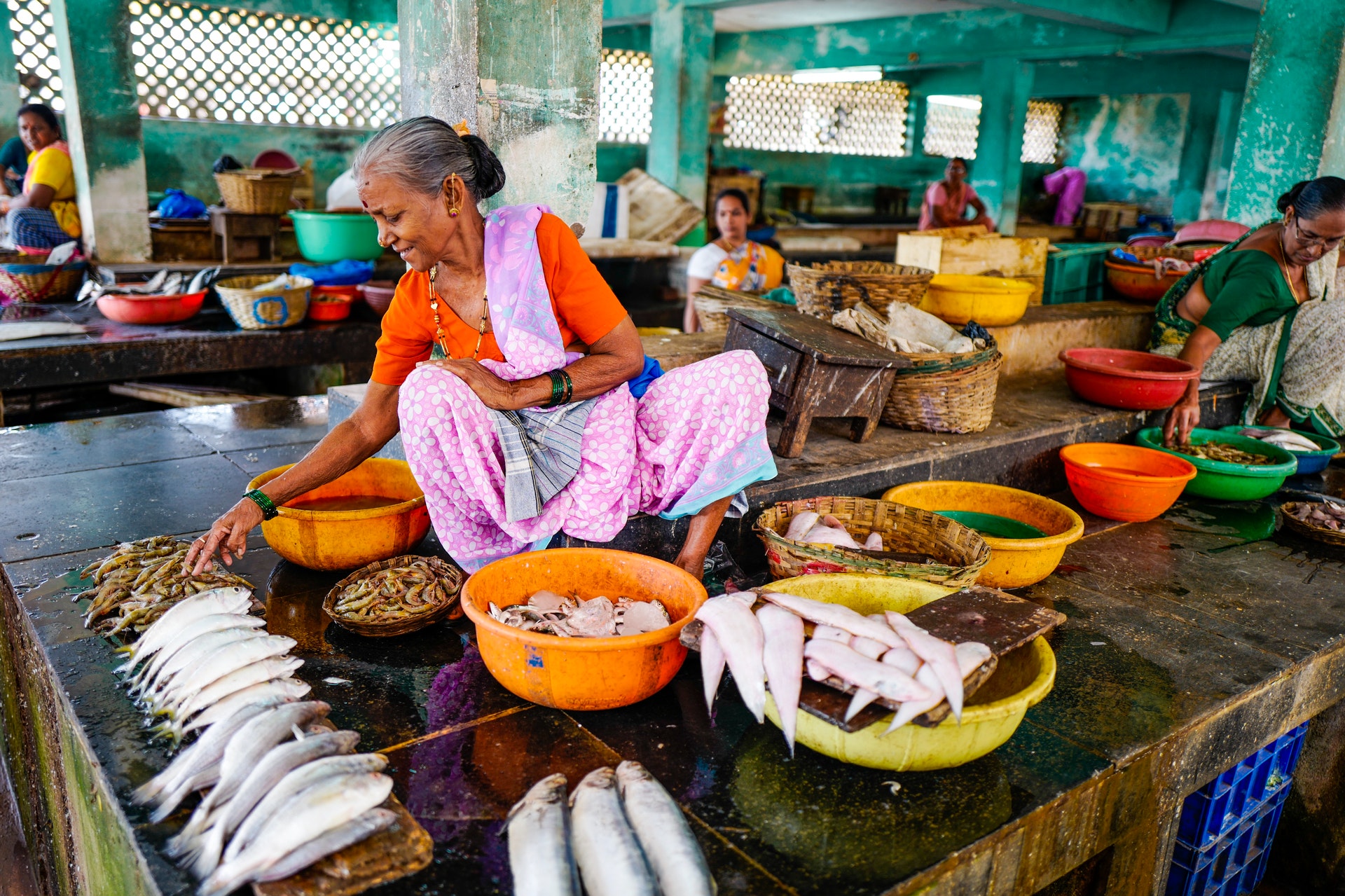
In a coastal village of India, a fisherwoman waits on the fishing dock with an empty basket perched upon her hip as fishermen from a fishing vessel unload their catch for the day. She fills up her basket with the fish, saves a portion to feed her family, and balancing the basket on her head, travels to the markets to sell it, but not before haggling over the price. In her community of small-scale fishers, women have a right to a place in the local market to sell the fish. Even so, she had to fight for her rights and respect in her community because she was a widow. In the afternoon, she travels door to door to sell the leftover fish in the urban city surrounding the village.
Women like the one mentioned above play a central role in post-harvest activities of fishing such as transporting catch from the fish-landing sites to the local markets, cleaning, drying, marketing, selling, and trading of fish. Fisherwomen may also be involved in fixing and repairing damaged nets. There are a few examples of fisheries dominated by fisherwomen such as diving for seaweed harvest in Tamil Nadu (southeast India), chipping for oysters with their sickles during low tide in Goa and Maharashtra (northwest India) or in aquaculture. Despite women’s significant roles in fisheries, when we think about fisheries, we usually picture men navigating boats, fishing and being involved in sale and trade of fish. Of the approximately 5.4 million people engaged in fisheries in India, women account for nearly 1.6 million. Despite the high number of women in fisheries of India, they are underrepresented, excluded from subsidies and loans, which are often restricted to men, as well as meetings, workshops, and decision-making processes. These add to the barriers to women’s engagement within the already growing social, cultural, and religious norms in the fisheries sector. In some cases, development has exacerbated women’s inequities. For example, the high number of male migrant fishers who move away from one fishing ground to another compete with local women over the already scarce resources and employment opportunities, while also increasing the workload for women in their native areas, thus limiting the resulting benefits for women. Women are also more vulnerable to overfishing, declines in catch stocks, and industrialisation as it puts their job opportunities in jeopardy. Crises like COVID-19 also widened the inequities where lockdowns left fisherwomen with fish but no customers, substantially hampering their livelihoods.
Furthermore, there is a pressing need to seek recognition for the paid and unpaid labour of women that goes towards sustaining fisheries and fishing communities, and to ensure that women’s roles in the fisheries sector do not remain ‘invisible’. Fisherwomen, as an essential part of Indian (and world) fisheries, deserve to have a voice in decision-making processes with respect to fisheries planning and management. However, a safe space is also required for areas where women may be breaking traditions by working and where social, cultural, or religious conflict might arise. Thus, awareness of both the positive and negative aspects of their participation in fisheries is required to understand how they may be involved in fisheries so that they benefit and are more involved in decision making processes. Recognizing the presence of women paints a more holistic and inclusive picture of fisheries, while also contributing to cultural understanding, and economic growth. This is needed to create more solid management strategies. Lastly, it is important to remember that in our urgency to protect species and marine ecosystems, we can exacerbate gender and social inequities when we do not address how decisions are made and who is part of the decision-making processes.
Photo by Ishay Botbol from Pexels










